Analysis of Non-Metallic Inclusions by Means of Chemical and Electrolytic Extraction—A Review
Abstract
1. Introduction
2. Chemical Extraction Methods
2.1. Early Developments (1900s–2000s)
2.2. Current Progress (2000–Present)
3. Electrolytic Extraction Methods
3.1. Early Developments (1900s–1980s)
3.2. Maturation Years (1980s–Present)
4. Comparison of Different Extraction Approaches
5. Conclusions
Author Contributions
Funding
Informed Consent Statement
Data Availability Statement
Conflicts of Interest
Nomenclature
| Symbol | Description |
| SEM-EDS | Scanning electron microscope–energy dispersive spectroscope |
| 2D | 2-dimensions |
| 3D | 3-dimensions |
| ppm | Parts per million |
| Wt.% | Weight percent |
| AA | Acetyl acetone-tetra methyl ammonium chloride-methanol |
| TEA | Triethanolamine-tetramethylammonium chloride-methanol |
| MS | Methyl salicylate-salicylic acid-tetramethylammonium chloride-methanol |
| REM | Rare earth metals |
References
- Costa e Silva, A.L.V.d. The effects of non-metallic inclusions on properties relevant to the performance of steel in structural and mechanical applications. J. Mater. Res. Technol. 2019, 8, 2408–2422. [Google Scholar] [CrossRef]
- Michelic, S. Selected Aspects of Inclusion Metallurgy in Steelmaking; Habilitation; Montanuniversitaet Leoben: Leoben, Austria, 2018. [Google Scholar]
- Kay, D.A.R. Inclusions engineering. C. Bull. 1982, 75, 130. [Google Scholar]
- Takamura, J.; Mizoguchi, S. Roles of Oxides in Steels Performance. In Proceedings of the 6th International Iron and Steel Congress ISIJ, Nagoya, Japan, 21–26 October 1990; Volume I, pp. 591–597. [Google Scholar]
- Wijk, O. Inclusion engineering. In Proceedings of the 7th International Conference on Refining Processes, Luleå, Sweden, 7–8 June 1995; pp. 35–67. [Google Scholar]
- Anderson, C.W.; Shi, G.; Atkinson, H.V.; Sellars, C.M.; Yates, J.R. Interrelationship between statistical methods for estimating the size of the maximum inclusion in clean steels. Acta Mater. 2003, 51, 2331–2343. [Google Scholar] [CrossRef]
- Kawakami, M.; Nishimura, T.; Takenaka, T.; Yokoyama, S. Characterization of Relieved Non-metallic Inclusions in Stainless Steel by Image Processing of Micrographs. ISIJ Int. 1999, 39, 164–170. [Google Scholar] [CrossRef]
- Barbosa, C.; de Campos, J.B.; do Nascimento, J.L.; Caminha, I.M.V. Quantitative study on nonmetallic inclusion particles in steels by automatic image analysis with extreme values method. J. Iron Steel Res. Int. 2009, 16, 18–21. [Google Scholar] [CrossRef]
- Newbury, D.E. X-ray spectrometry and spectrum image mapping at output count rates above 100 kHz with a silicon drift detector on a scanning electron microscope. Scanning 2005, 27, 227–239. [Google Scholar] [CrossRef]
- Tang, D.; Ferreira, M.E.; Pistorius, P.C. Automated Inclusion Microanalysis in Steel by Computer-Based Scanning Electron Microscopy: Accelerating Voltage, Backscattered Electron Image Quality, and Analysis Time. Microsc. Microanal. 2017, 23, 1082–1090. [Google Scholar] [CrossRef]
- Mayerhofer, A. Enhanced Characterization of Non-Metallic Inclusions for (Sub) Micro Steel Cleanness Evaluations. Ph.D. Thesis, Montanuniversitaet Leoben, Leoben, Austria, 2021. [Google Scholar]
- Atkinson, H.V.; Shi, G. Characterization of inclusions in clean steels: A review including the statistics of extremes methods. Prog. Mater. Sci. 2003, 48, 457–520. [Google Scholar] [CrossRef]
- Bandi, B.; Santillana, B.; Tiekink, W.; Koura, N.; Williams, M.; Srirangam, P. 2D automated SEM and 3D X-ray computed tomography study on inclusion analysis of steels. Ironmak. Steelmak. Process. Prod. Appl. 2020, 47, 47–50. [Google Scholar] [CrossRef]
- Faraji, M.; Wilcox, D.P.; Thackray, R.; Howe, A.A.; Todd, I.; Tsakiropoulos, P. Quantitative Characterization of Inclusions in Continuously Cast High-Carbon Steel. Metall. Mater. Trans. B Process Metall. Mater. Process. Sci. 2015, 46, 2490–2502. [Google Scholar] [CrossRef]
- Michelic, S.K.; Wieser, G.; Bernhard, C. On the representativeness of automated SEM/EDS analyses for inclusion characterisation with special regard to the measured sample area. ISIJ Int. 2011, 51, 769–775. [Google Scholar] [CrossRef][Green Version]
- Goldstein, J.I.; Newbury, D.E.; Michael, J.R.; Ritchie, N.W.; Scott, J.H.J.; Joy, D.C. Scanning Electron Microscopy and X-ray Microanalysis; Springer: New York, NY, USA, 2018; ISBN 978-1-4939-6674-5. [Google Scholar]
- Zhang, X.; Zhang, L.; Yang, W.; Zhang, Y.; Ren, Y.; Dong, Y. Comparison of 2D and 3D morphology of non-metallic inclusions in steel using different methods. Metall. Res. Technol. 2017, 114, 113. [Google Scholar] [CrossRef]
- Zhang, X.; Zhang, L.; Yang, W.; Dong, Y. Characterization of MnS Particles in Heavy Rail Steels Using Different Methods. Steel Res. Int. 2017, 88, 1600080. [Google Scholar] [CrossRef]
- Janis, D.; Karasev, A.; Inoue, R.; Jönsson, P.G. A Study of Cluster Characteristics in Liquid Stainless Steel and in a Clogged Nozzle. Steel Res. Int. 2015, 86, 1271–1278. [Google Scholar] [CrossRef]
- Goto, H.; Watanabe, T. Studies on the Determination of Non-Metallic Inclusions in Iron and Steel. I: Determination of Non-Metallic Inclusions in Plain Carbon Steel and Silicon Steel. Sci. Rep. Res. Inst. Tohoku Univ. Ser. A Phys. Chem. Metall. 1952, 5, 505–512. [Google Scholar]
- Kobayashi, S.; Kanamori, Y.; Kosiya, K. On the Determination of Silicate Inclusion in Steel. Tetsu-to-Hagane 1939, 25, 1074–1080. [Google Scholar] [CrossRef][Green Version]
- Wasmuht, K.; Oberhoffer, P. Ueber die Bestimmung der oxydischen Einschlüsse in Eisen und Stahl auf rückstandsanalytischem Wege durch Chloraufschluß. Arch. Eisenhüttenwes. 1929, 2, 829–842. [Google Scholar] [CrossRef]
- Colbeck, E.; Craven, S.; Murray, W. The Determination of Non-Metallic Inclusions in Steel and Iron. J. Iron Steel Inst. 1936, 134, 251. [Google Scholar]
- Moriwaki, K. On the determination of non-metallic inclusions in steels by the chlorine method (the first report). Tetsu-to-Hagane 1941, 27, 965–982. [Google Scholar] [CrossRef][Green Version]
- Yamada, K. On the determination of iron oxide in sponge iron by iodine method. Tetsu-to-Hagane 1941, 27, 671–675. [Google Scholar] [CrossRef][Green Version]
- Walz, H.; Bloom, R.A. Non-Metallic Inclusions, Their Quantitative Extraction from Steel. JOM 1960, 12, 928–932. [Google Scholar] [CrossRef]
- Dickenson, J. A Note on the Distribution of Silicates in Steel Ingots. Iron Steel Inst. 1926, 113, 177–196. [Google Scholar]
- Thompson, J.G.; Vacher, H.C.; Bright, H.A. Cooperative study of methods for the determination of oxygen in steel. J. Res. Natl. Bur. Stan. 1937, 18, 259. [Google Scholar] [CrossRef]
- Thompson, J.G.; Acken, J.S. Determination of alumina and silica in steel by the hydrochloric acid residue method. Bur. Stan. J. Res. 1932, 9, 615. [Google Scholar] [CrossRef]
- Scott, F.W. Extraction of slag and oxide inclusions in iron or steel: Electrolytic method. Ind. Eng. Chem. Anal. Ed. 1932, 4, 121–125. [Google Scholar] [CrossRef]
- Garside, J.E.; Rooney, T.E. The Alcoholic-Iodine method for the extration of inclusions from steel. J. Iron Steel Inst. 1957, 185, 95–104. [Google Scholar]
- Stevenson, W.; Speight, G. Simplification of the Alcoholic Iodine Method for the Determination of Oxide Residues in Steel. J. Iron Steel Inst. 1941, 143, 352. [Google Scholar]
- Bramly, G.; Maddocks, W.R.; Tateson, G. Oxygen Determination on a Series of Bath Samples Taken from an Acid Open-Hearth Furnace. Iron Steel Inst. 1939, 25, 11. [Google Scholar]
- Egan, J.; Crafts, W.; Kinzel, A. Oxide Analysis by Iodine Extraction in Steelmaking Problems. AIME Trans. 1933, 105, 169. [Google Scholar]
- Taylor-Austin, E. The Determination of Non-Metallic Inclusions in Pig and Cast Iron by a Modified Aqueous Iodine Method. Iron Steel Inst. 1939, 25, 121. [Google Scholar]
- Colbeck, E.; Craven, S. The Chlorine Method. J. Iron Steel Inst. 1935, 148, 243. [Google Scholar]
- Colbeck, E.; Craven, S.; Murray, W. The Chlorine Method of Separation of Non-Metallic Inclusions in Steels. Iron Steel Inst. 1937, 16, 124. [Google Scholar]
- Cunningham, T.R.; Price, R.J. Determination of Nonmetallic Inclusions in Plain Carbon and Manganese Steels Iodine and Nitric Acid Extraction Methods. Ind. Eng. Chem. Anal. Ed. 1933, 5, 27–29. [Google Scholar] [CrossRef]
- Smerko, R.G.; Flinchbaugh, D.A. Recent Progress in the Chemical Extraction of Nonmetallic Inclusions in Steel—Techniques and Applications. JOM 1968, 20, 43–51. [Google Scholar] [CrossRef]
- Oelsen, W.; Sauer, K.-H.; Keller, H. Zur chemischen Isolierung von oxydischen Einschlüssen in unberuhigten Stählen. Arch. Eisenhüttenwes. 1965, 36, 529–531. [Google Scholar] [CrossRef]
- Keller, H.; Sauer, K.-H. Isolierung von Karbiden durch Lösen von Stahl in Salpetersäure. Arch. Eisenhüttenwes. 1967, 38, 429–433. [Google Scholar] [CrossRef]
- Mori, T.; Fujita, K.; Tokizane, M.; Yamaguchi, K. Behavior of Niobium Carbides and Nitrides in Steel. Tetsu-to-Hagane 1964, 50, 911–917. [Google Scholar] [CrossRef][Green Version]
- Beeghly, H.F. Determination of Nonmetallic Compounds in Metals. Anal. Chem. 1952, 24, 1713–1721. [Google Scholar] [CrossRef]
- Holec, G.; Koch, W. Isolierung und Untersuchung der Oxydeinschlüsse in unberuhigten und teilberuhigten Stählen. Arch. Eisenhüttenwes. 1966, 37, 133–143. [Google Scholar] [CrossRef]
- Koch, W.; Gautsch, O. Über eine einfache Durchführung der Chlorvakuumtrennung. Arch. Eisenhüttenwes. 1959, 30, 723–730. [Google Scholar] [CrossRef]
- Lundell, G.; Hoffman, J.; Bright, H.A. Chemical Analysis of Iron and Steel; John Wiley & Sons Ltd.: Hoboken, NJ, USA, 1931. [Google Scholar]
- Heczko, T. Berg und Hüttenmännische Monatshefte; Springer: Berlin/Heidelberg, Germany, 1947; Volume 92, pp. 125–139. [Google Scholar]
- Rooney, T.E. Eighth Report on the Heterogeneity of Steel Ingots. Iron Steel Inst. Spec. Rep. 1939, 25, 141–158. [Google Scholar]
- Kammori, O.; Futamura, E. Alcoholic Iodine Method for Determination of Non-metallic Inclusions in Steel. Tetsu-to-Hagane 1959, 45, 1072–1074. [Google Scholar]
- Maekawa, S.; Ebihara, M. Quantitative method of non-metal inclusions in steel by iodine alcohol method. Bunseki Kagaku 1957, 6, 715–719. [Google Scholar] [CrossRef][Green Version]
- Ihida, M.; Ishii, T.; Tsuchida, S. Isolation of Iron Oxides in Iron and Steel, and Change in their Composition and Form by Heat Treatment. Tetsu-to-Hagane 1965, 51, 1633–1645. [Google Scholar] [CrossRef][Green Version]
- Okura, Y. Separation and determination of oxide inclusions in plain carbon steel with a methanolic bromine solution. Nippon Kinzoku 1960, 24, 237–245, 289–330. [Google Scholar]
- Bohnstedt, U. Brom-Methanol als Hilfsmittel bei der Oxidisolierung aus Stählen und verwandten Legierungen. Z. Anal. Chem. 1964, 199, 109–117. [Google Scholar] [CrossRef]
- Beeghly, H.F. Method of Dissolving Steel to Obtain Residue Containing Aluminum Nitride. U.S. Patent No. 2526841, 24 October 1950. [Google Scholar]
- Raybeck, R.M.; Pasztor, L. Determination of Nonmetallic Compounds in Steel. ASTM Spec. Tech. Publ. 1966, 393, 75–86. [Google Scholar]
- Narita, K.; Hara, H.; Miyamoto, A.; Iwakiri, H. Fundamental Study on Isolation and Determination of Carbides in Steel. Tetsu-to-Hagane 1974, 60, 1962–1979. [Google Scholar] [CrossRef][Green Version]
- Narita, K. Observation, Identification and Determination of Nonmetallic Inclusion and Precipitate in Steel. ISIJ Int. 1976, 16, 208–213. [Google Scholar] [CrossRef]
- Maruzen. Rapid Chemical Analysis of Iron and Steel. Jpn. Soc. Promot. Sci. Ed. 1957. [Google Scholar]
- Kichline. Note on the Determination of Aluminium Oxide and Total Aluminium in Steel. J. Ind. Eng. Chem. 1915, 7, 806. [Google Scholar] [CrossRef]
- Dekkers, R.; Blanpain, B.; Wollants, P. Crystal growth in liquid steel during secondary metallurgy. Met. Mater. Trans B 2003, 34, 161–171. [Google Scholar] [CrossRef]
- Fernandes, M.; Cheung, N.; Garcia, A. Investigation of nonmetallic inclusions in continuously cast carbon steel by dissolution of the ferritic matrix. Mater. Charact. 2002, 48, 255–261. [Google Scholar] [CrossRef]
- Lu, J.; Wiskel, J.B.; Omotoso, O.; Henein, H.; Ivey, D.G. Matrix Dissolution Techniques Applied to Extract and Quantify Precipitates from a Microalloyed Steel. Met. Mater. Trans. A 2011, 42, 1767–1784. [Google Scholar] [CrossRef]
- Janis, D.; Inoue, R.; Karasev, A.; Jönsson, P.G. Application of Different Extraction Methods for Investigation of Nonmetallic Inclusions and Clusters in Steels and Alloys. Adv. Mater. Sci. Eng. 2014, 2014, 210486. [Google Scholar] [CrossRef]
- Inoue, R.; Kei, K.; Koichiro, T.; Shigeru, U.; Tatsuro, A. Three dimensional estimation of multi-component inclusion particle in steel. Yejin Fenxi/Metall. Anal. 2012, 32, 1–8. [Google Scholar]
- Inoue, R.; Ueda, S.; Ariyama, T.; Suito, H. Extraction of Nonmetallic Inclusion Particles Containing MgO from Steel. ISIJ Int. 2011, 51, 2050–2055. [Google Scholar] [CrossRef]
- Janis, J.; Inoue, R.; Karasev, A.; Nakajima, K.; Jönsso, P.G. Characteristics of Ti-Ce Complex Deoxidation Products in a Fe-20mass%Cr Alloy. Steel Res. Int. 2009, 80, 450–456. [Google Scholar] [CrossRef]
- Schickbichler, M. Extraktion Sulfidischer Einschlüsse aus der Stahlmatrix. Bachelor’s Thesis, Montanuniversitaet Leoben, Leoben, Austria, 2020. [Google Scholar]
- Mayerhofer, A.; You, D.; Presoly, P.; Bernhard, C.; Michelic, S.K. Study on the Possible Error Due to Matrix Interaction in Automated SEM/EDS Analysis of Nonmetallic Inclusions in Steel by Thermodynamics, Kinetics and Electrolytic Extraction. Metals 2020, 10, 860. [Google Scholar] [CrossRef]
- Thiele, K.; Ilie, S.; Roessler, R.; Penz, A.; Michelic, S. Tracing of Non-metallic Inclusions in Secondary Metallurgy by Means of Rare Earth Elements. In Proceedings of the ASIA STEEL 2021 Jointed with Automotive Steel International Conference, Gyeongju, Korea, 9–7 December 2021. [Google Scholar]
- Klinger, P.; Koch, W. Beitrag zur elektrolytischen Bestimmung von nichtmetallischen Einschlüssen im Stahl. Arch. Eisenhüttenwes. 1938, 11, 569–582. [Google Scholar] [CrossRef]
- Koch, W.; Artner, E. Beitrag zur Isolierung von Sulfiden in Stählen. Arch. Eisenhüttenwes. 1958, 29, 737–744. [Google Scholar] [CrossRef]
- Koch, W.; Ramsauer, I.; Stackelberg, M. Die elektrochemischen Vorgänge bei der eletrolytischen Isolierung von Gefügebestandteilen der Stähle mit Wechselstrom. Arch. Eisenhüttenwes. 1954, 25, 95–106. [Google Scholar] [CrossRef]
- Koch, W.; Sundermann, H. Elektrochemische Grundlagen der Isolierung von Gefügebestandteilen in Stählen. Arch. Eisenhüttenwes. 1957, 28, 557–566. [Google Scholar] [CrossRef]
- Artner, E. Beiträge zur Isolierung der Sulfide. Radex Rundsch 1957, 725–726. [Google Scholar]
- Born, K. Über die Isolierung von Sulfideinschlüssen und Zusammenhänge zwischen Stahl- und Einschlusseigenschaften. Arch. Eisenhüttenwes. 1958, 29, 179–186. [Google Scholar] [CrossRef]
- Koch, W.; Keller, H.; Sauer, K.H. Über einen Trennungsgang zur Analyse kleiner Mengen von Eisenlegierungen und isolierten Gefügebestandteilen. Arch. Eisenhüttenwes. 1964, 35, 407–414. [Google Scholar] [CrossRef]
- Kroll, H.; Lenk, P. Zur Isolation oxidischer Einschlüsse in Stahl. Neue Hütte 1967, 12, 434–438. [Google Scholar]
- Yoshida, Y.; Funahashi, Y. On the Extraction and Size Distribution Determination of Large Non-metallic Inclusions in Steel by Slime Method. ISIJ Int. 1976, 16, 628–636. [Google Scholar] [CrossRef][Green Version]
- Watanabe, K.; NARITA, K. Report of the Activity of Joint Research Committee on Theory of Models and Scale-up Method/Isolation and Determination of Sulphides in Steel. Tetsu-to-Hagane 1987, 73, 64–83. [Google Scholar] [CrossRef][Green Version]
- Hinotani, S.; Endo, J.; Takayama, T.; Mizui, N.; Inokuma, Y. Isolation and Determination of Sulfides in Titanium-Bearing Ultra Low Carbon Steels; Physical Metallurgy of IF Steels, 10–11 May 1994; Iron and Steel Institute of Japan: Tokyo, Japan, 1994. [Google Scholar]
- Bruncková, H.; Kováč, F. Chemical and Electrochemical Isolation of A1N and MnS Precipitates from Fe—3% Si Steels. Chemistry 1995, 49, 115–121. [Google Scholar]
- Ohta, H.; Suito, H. Characteristics of Particle Size Distribution of Deoxidation Products with Mg, Zr, Al, Ca, Si/Mn and Mg/Al in Fe-10mass%Ni Alloy. ISIJ Int. 2006, 46, 14–21. [Google Scholar] [CrossRef]
- Doostmohammadi, H.; Karasev, A.; Jönsson, P.G. A Comparison of a Two-Dimensional and a Three-Dimensional Method for Inclusion Determinations in Tool Steel. Steel Res. Int. 2010, 81, 398–406. [Google Scholar] [CrossRef]
- Kanbe, Y.; Karasev, A.; Todoroki, H.; Jönsson, P.G. Analysis of Largest Sulfide Inclusions in Low Carbon Steel by Using Statistics of Extreme Values. Steel Res. Int. 2011, 82, 313–322. [Google Scholar] [CrossRef]
- Park, J.; Kim, D.J.; Min, D. Characterization of Nonmetallic Inclusions in High-Manganese and Aluminum-Alloyed Austenitic Steels. Metall. Mater. Trans. A 2012, 43, 2316–2324. [Google Scholar] [CrossRef]
- Bi, Y.; Karasev, A.V.; Jönsson, P.G. Evolution of Different Inclusions during Ladle Treatment and Continuous Casting of Stainless Steel. ISIJ Int. 2013, 53, 2099–2109. [Google Scholar] [CrossRef]
- Inoue, R.; Kimura, R.; Ueda, S.; Suito, H. Applicability of Nonaqueous Electrolytes for Electrolytic Extraction of Inclusion Particles Containing Zr, Ti, and Ce. ISIJ Int. 2013, 53, 1906–1912. [Google Scholar] [CrossRef]
- Kawamura, K.; Watanabe, S.; Amano, M.; Uchida, T.; Suzuki, T. Phase Analysis of Zirconium in Steel. Tetsu-to-Hagane 1975, 61, 2650–2659. [Google Scholar] [CrossRef][Green Version]
- Bi, Y.; Karasev, A.; Jönsson, P.G. Three-Dimensional Investigations of Inclusions in Ferroalloys. Steel Res. Int. 2014, 85, 659–669. [Google Scholar] [CrossRef]
- Bi, Y.; Karasev, A.; Jönsson, P.G. Investigations of inclusions in ferrochromium alloys. Ironmak. Steelmak. Process. Prod. Appl. 2014, 41, 756–762. [Google Scholar] [CrossRef]
- Sipola, T.; Alatarvas, T.; Heikkinen, E.-P.; Fabritius, T. Determination of Alloying Elements Ti, Nb, Mn, Ni, and Cr in Double-Stabilized Ferritic Stainless Steel Process Sample Using an Electrolytic Extraction Method and Separate Analysis of Inclusions. Metall. Mater. Trans. B Process Metall. Mater. Process. Sci. 2015, 46, 1775–1781. [Google Scholar] [CrossRef]
- Ma, W.; Bao, Y.; Wang, M.; Zhao, L. Effect of Mg and Ca Treatment on Behavior and Particle Size of Inclusions in Bearing Steels. ISIJ Int. 2014, 54, 536–542. [Google Scholar] [CrossRef]
- Bommareddy, A.; Tuttle, R.B. Study of Electrolytic Dissolution in Steels and Rare Earth Oxide Stability. Int. J. Met. 2016, 10, 201–207. [Google Scholar] [CrossRef]
- Keming, F.; Ruiming, N. Research on determination of the rare-earth content in metal phases of steel. Met. Mater. Trans. A 1986, 17, 315–323. [Google Scholar] [CrossRef]
- Liu, Y.; Zhang, L.; Duan, H.; Zhang, Y.; Luo, Y.; Conejo, A.N. Extraction, Thermodynamic Analysis, and Precipitation Mechanism of MnS-TiN Complex Inclusions in Low-Sulfur Steels. Met. Mater. Trans. A 2016, 47, 3015–3025. [Google Scholar] [CrossRef]
- Zhang, X.; Zhang, L.; Yang, W.; Wang, Y.; Liu, Y.; Dong, Y. Characterization of the Three-Dimensional Morphology and Formation Mechanism of Inclusions in Linepipe Steels. Metall. Mater. Trans. B Process Metall. Mater. Process. Sci. 2017, 48, 701–712. [Google Scholar] [CrossRef]
- Zhang, D.; Shen, P.; Xie, J.; An, J.; Huang, Z.; Fu, J. A method for observing tridimensional morphology of sulfide inclusions by non-aqueous solution electrolytic etching. J. Iron Steel Res. Int. 2019, 26, 275–284. [Google Scholar] [CrossRef]
- Kellner, H.E.O.; Karasev, A.V.; Sundqvist, O.; Jönsson, P.G. TiN Particles and Clusters during Ladle Treatments of Ni-based Alloy 825 using Different Stirring Modes. ISIJ Int. 2018, 58, 292–298. [Google Scholar] [CrossRef]
- Kellner, H.E.O.; Karasev, A.V.; Sundqvist, O.; Memarpour, A.; Jönsson, P.G. Estimation of Non-Metallic Inclusions in Industrial Ni Based Alloys 825. Steel Res. Int. 2017, 88, 1600024. [Google Scholar] [CrossRef]
- Wang, Y.; Karasev, A.; Jönsson, P.G. An Investigation of Non-Metallic Inclusions in Different Ferroalloys using Electrolytic Extraction. Metals 2019, 9, 687. [Google Scholar] [CrossRef]
- Du, H.; Karasev, A.; Sundqvist, O.; Jönsson, P. Modification of Non-Metallic Inclusions in Stainless Steel by Addition of CaSi. Metals 2019, 9, 74. [Google Scholar] [CrossRef]
- Nabeel, M.; Alba, M.; Karasev, A.; Jönsson, P.G.; Dogan, N. Characterization of Inclusions in 3rd Generation Advanced High-Strength Steels. Met. Mater. Trans. B 2019, 50, 1674–1685. [Google Scholar] [CrossRef]
- Guo, J.; Cheng, S.; Guo, H.; Mei, Y. Determination of non-metallic inclusions in a continuous casting slab of ultra-low carbon interstitial free steel by applying of metallographic method, electrolytic method and RTO technique. Sci. Rep. 2019, 9, 2929. [Google Scholar] [CrossRef] [PubMed]
- Guo, J.; Fang, K.; Guo, H.; Luo, Y.; Duan, S.; Shi, X.; Yang, W. Determination of Three-Dimensional Morphology and Inner Structure of Second-Phase Inclusions in Metals by Non-Aqueous Solution Electrolytic and Room Temperature Organic Methods. Metals 2018, 8, 68. [Google Scholar] [CrossRef]
- Luo, Y.; Zhang, L.; Yang, W.; Ren, Y.; Conejo, A.N. Precipitation of nitrides in non-oriented silicon steel. Ironmak. Steelmak. Process. Prod. Appl. 2019, 46, 359–367. [Google Scholar] [CrossRef]
- Luo, Y.; Yang, W.; Ren, Q.; Hu, Z.; Li, M.; Zhang, L. Evolution of Non-metallic Inclusions and Precipitates in Oriented Silicon Steel. Metall. Mater. Trans. B Process Metall. Mater. Process. Sci. 2018, 49, 926–932. [Google Scholar] [CrossRef]
- Guo, S.; Karasev, A.V.; Tilliander, A.; Jönsson, P.G. Evaluation of Sulfide Inclusions before and after Deformation of Steel by Using the Electrolytic Extraction Method. Metals 2021, 11, 543. [Google Scholar] [CrossRef]
- Sidorova, E.; Karasev, A.; Kuznetsov, D.; Jönsson, P.G. Investigation of the Initial Corrosion Destruction of a Metal Matrix around Different Non-Metallic Inclusions on Surfaces of Pipeline Steels. Materials 2022, 15, 2530. [Google Scholar] [CrossRef]
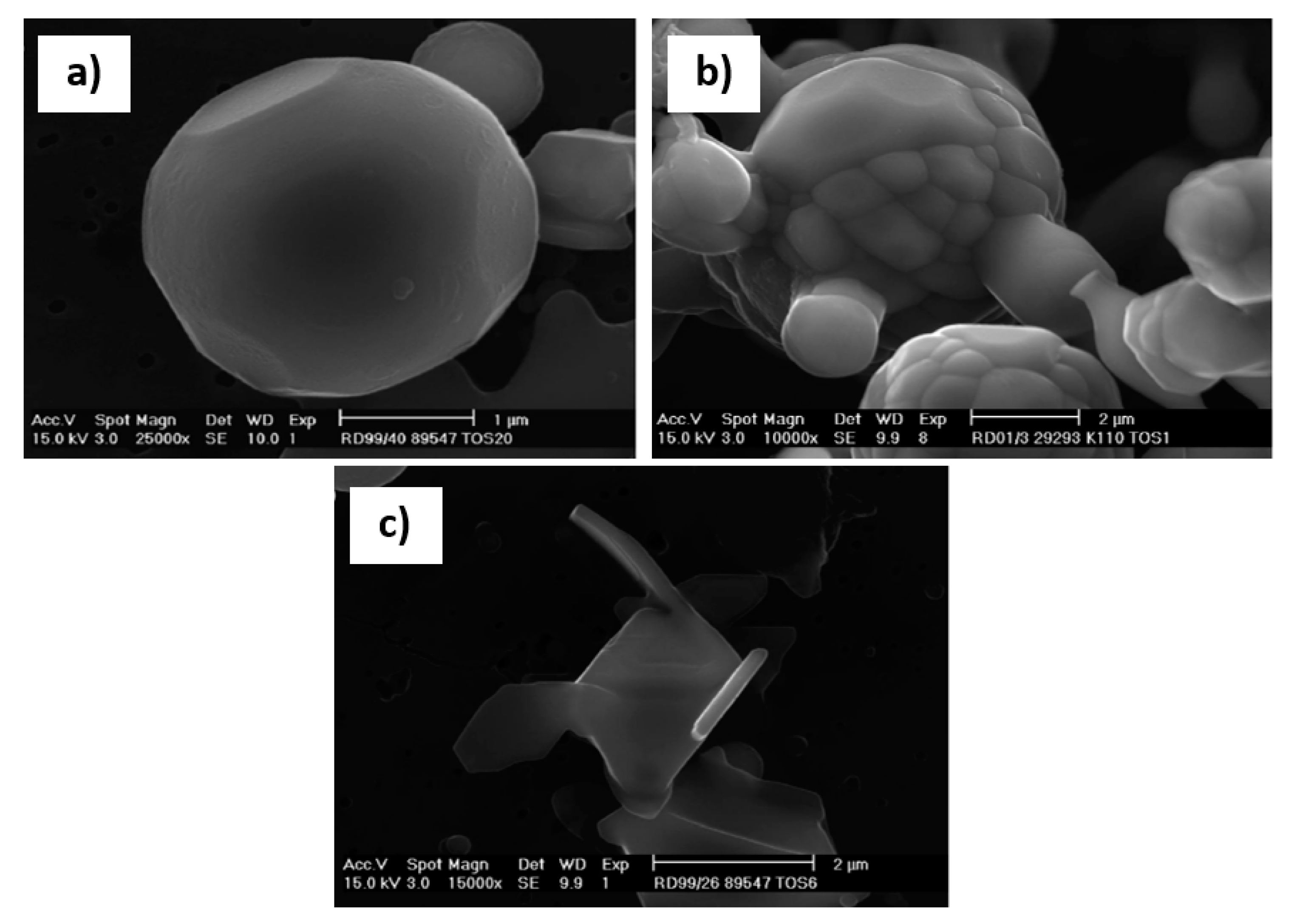
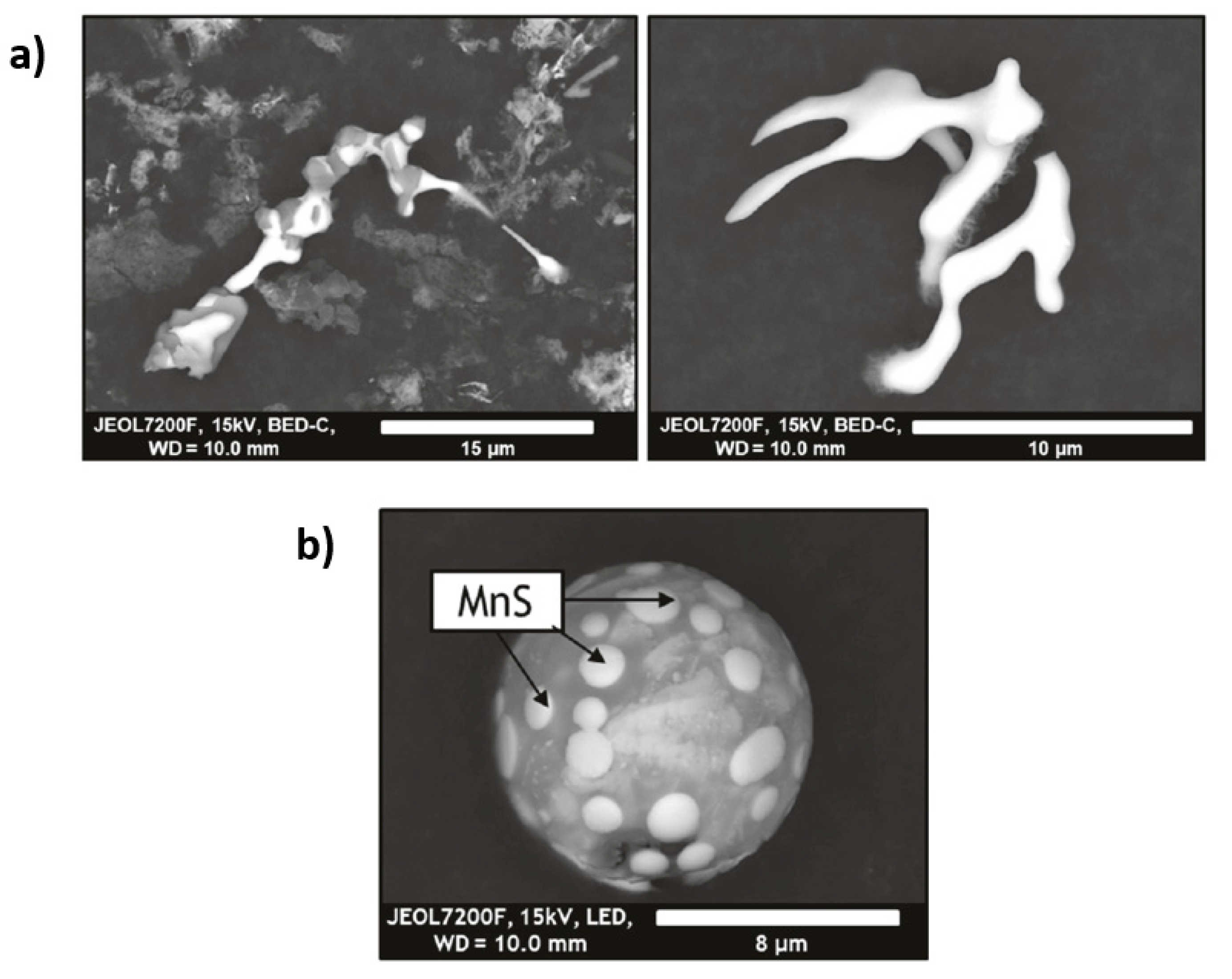
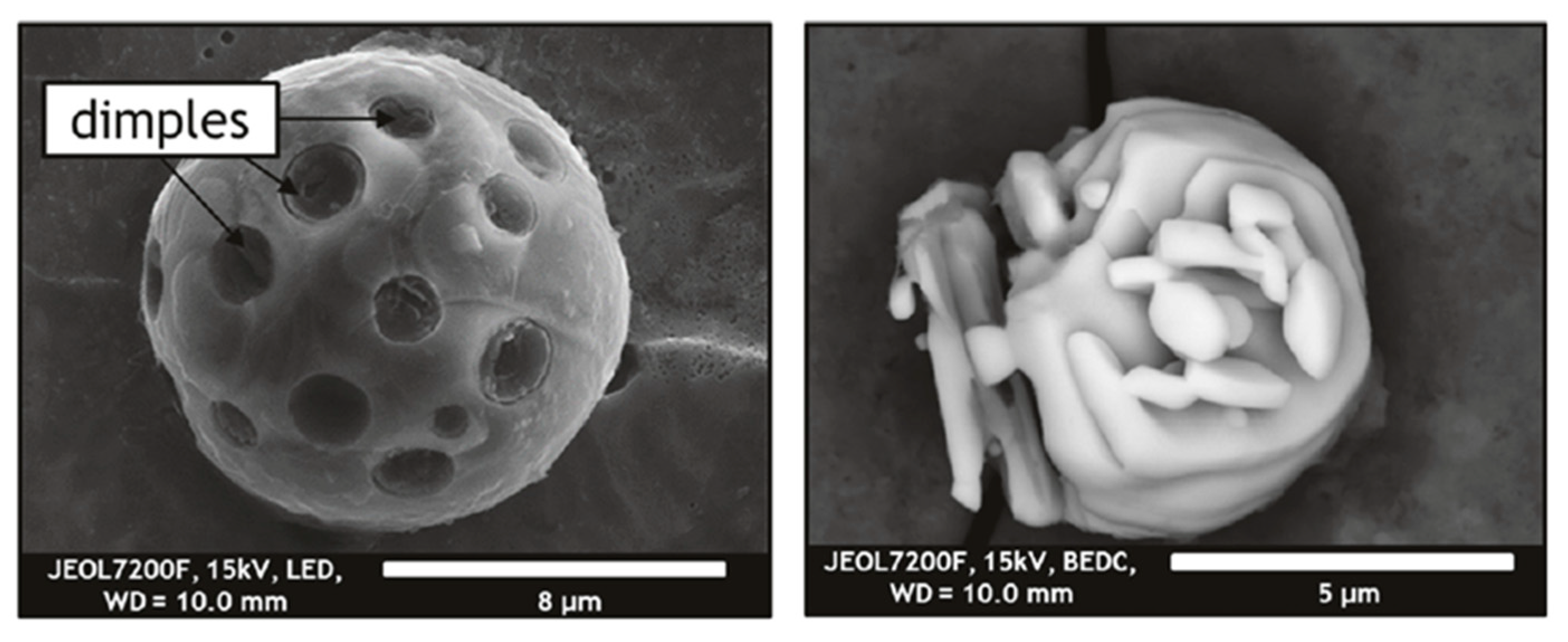

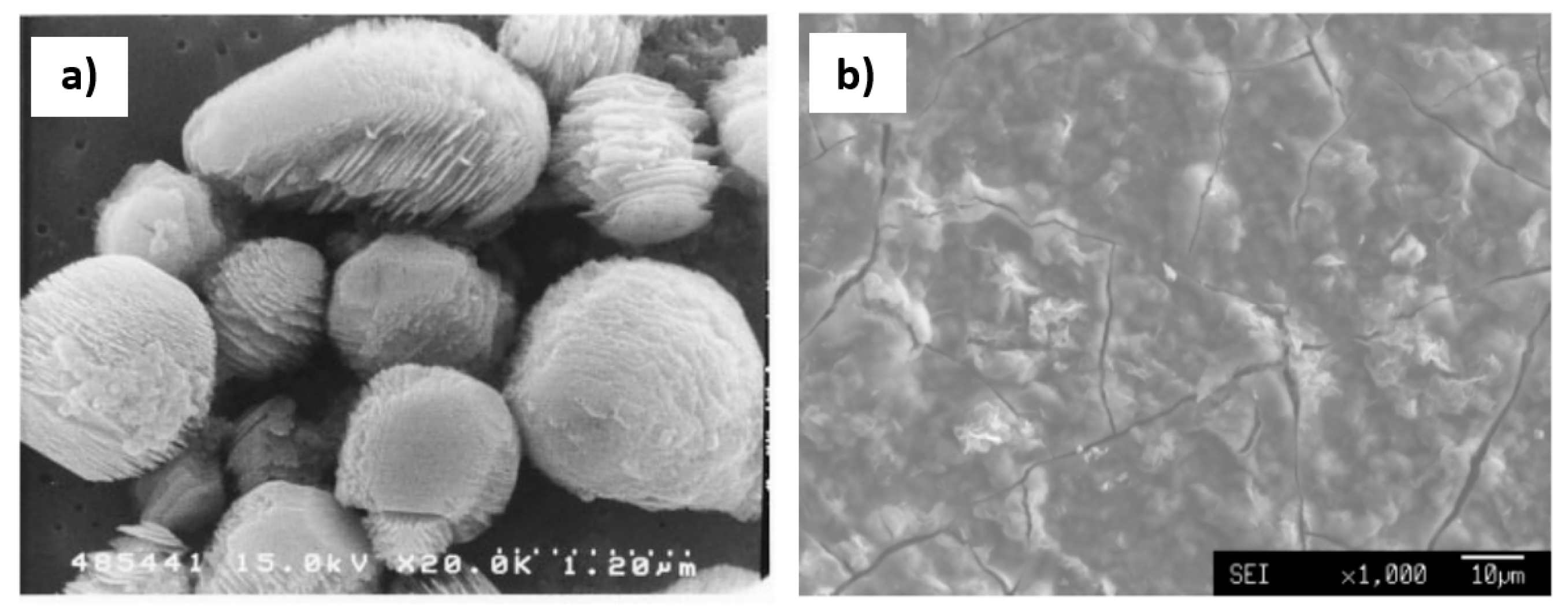

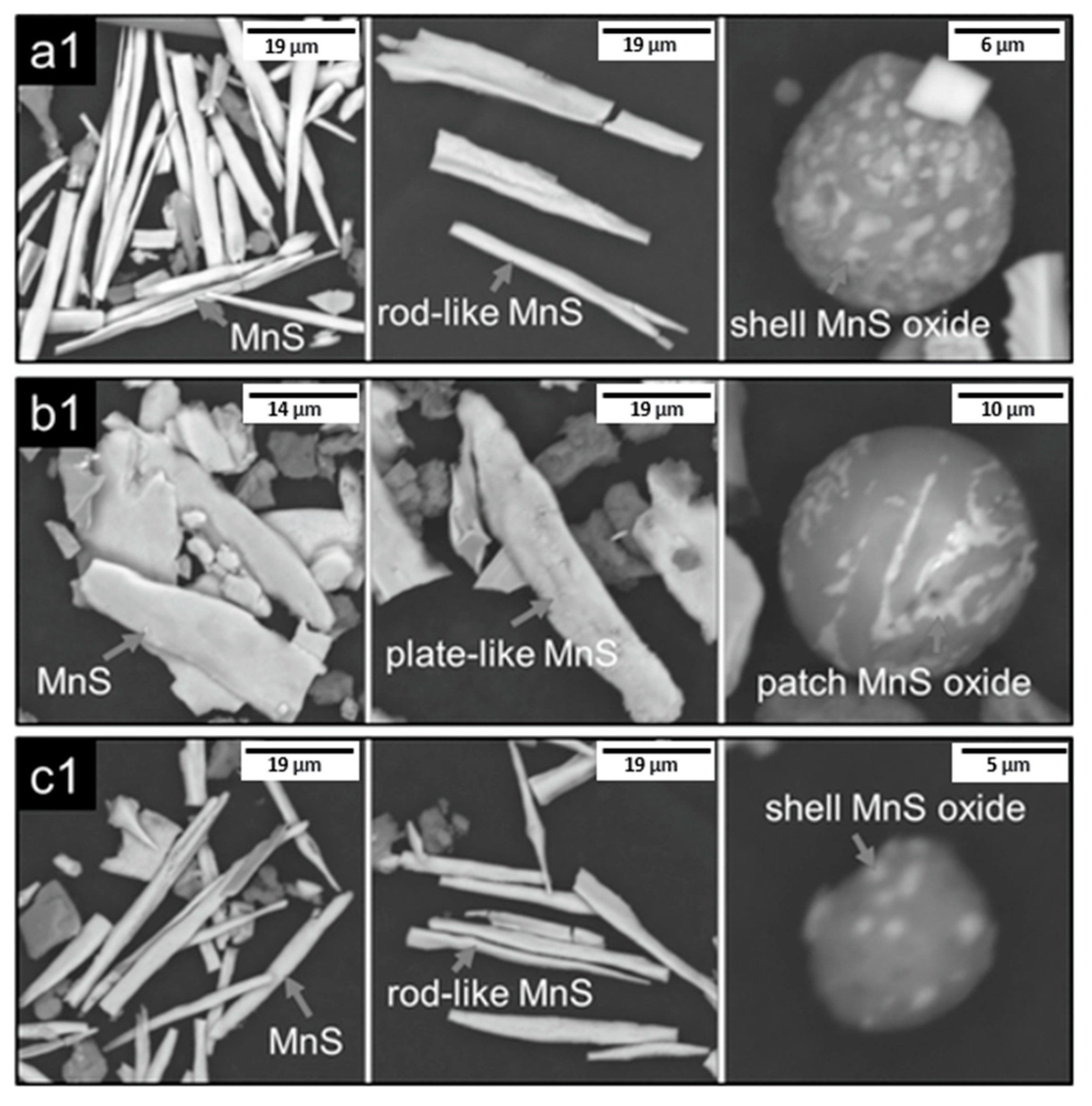
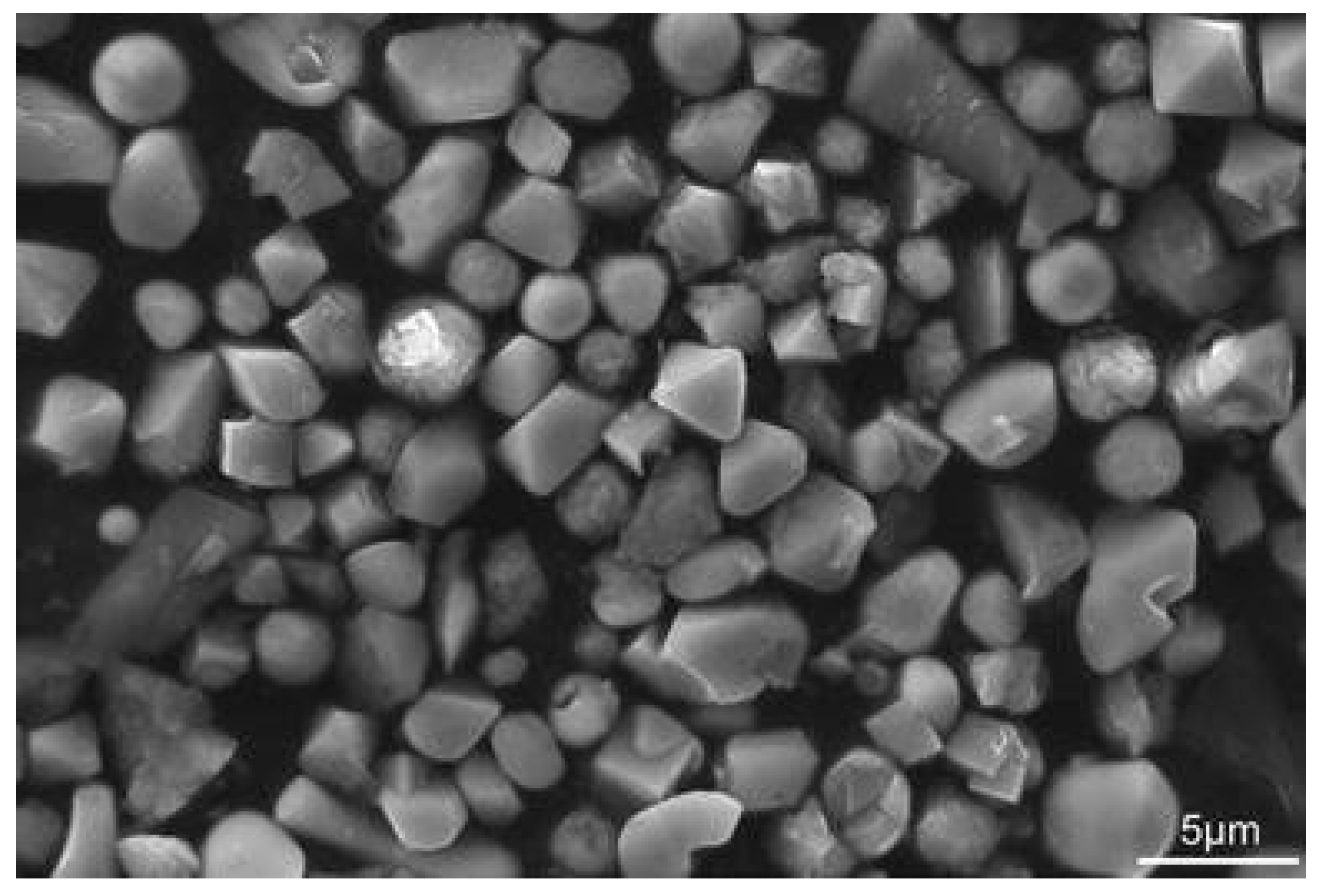
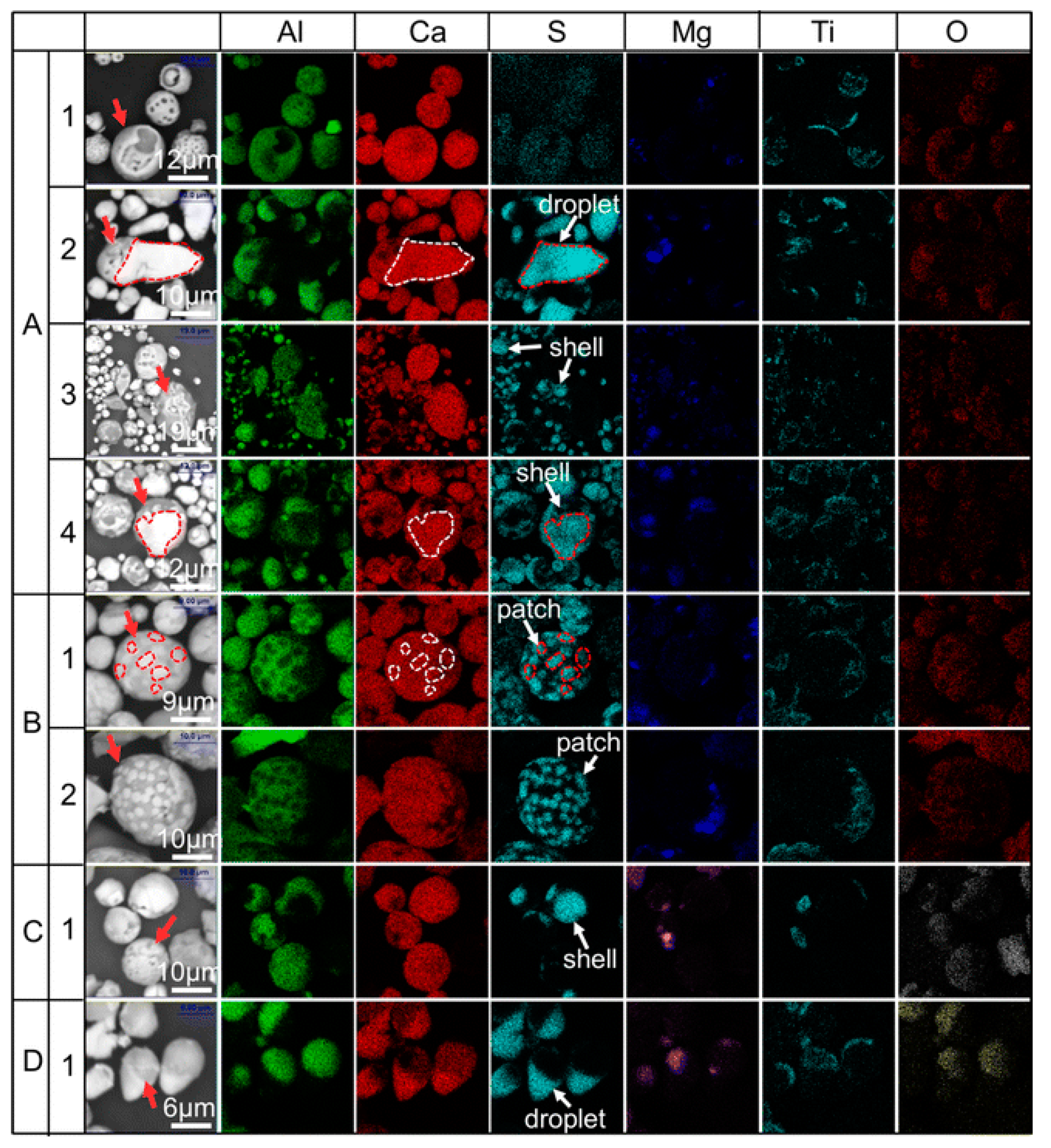
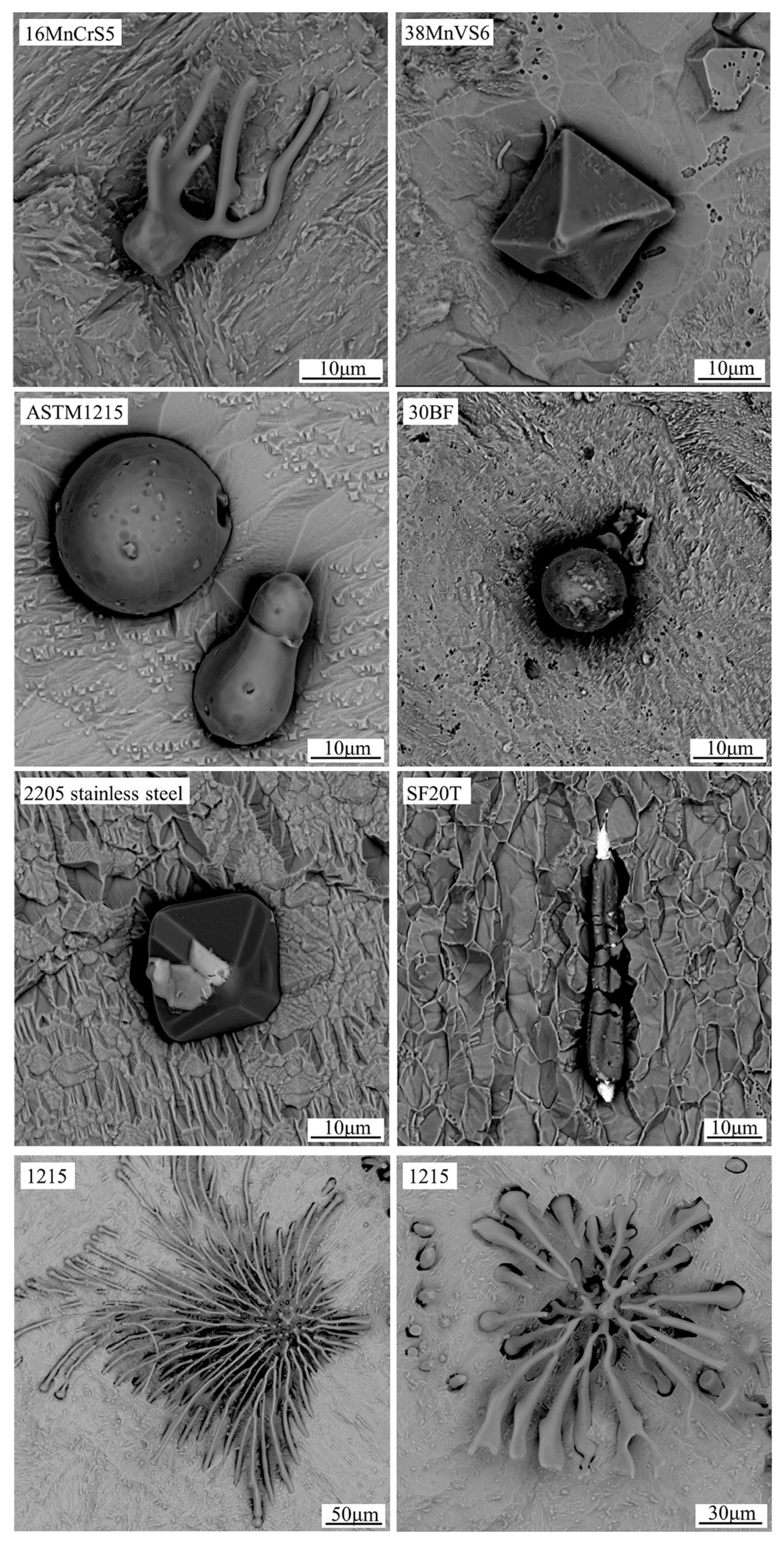

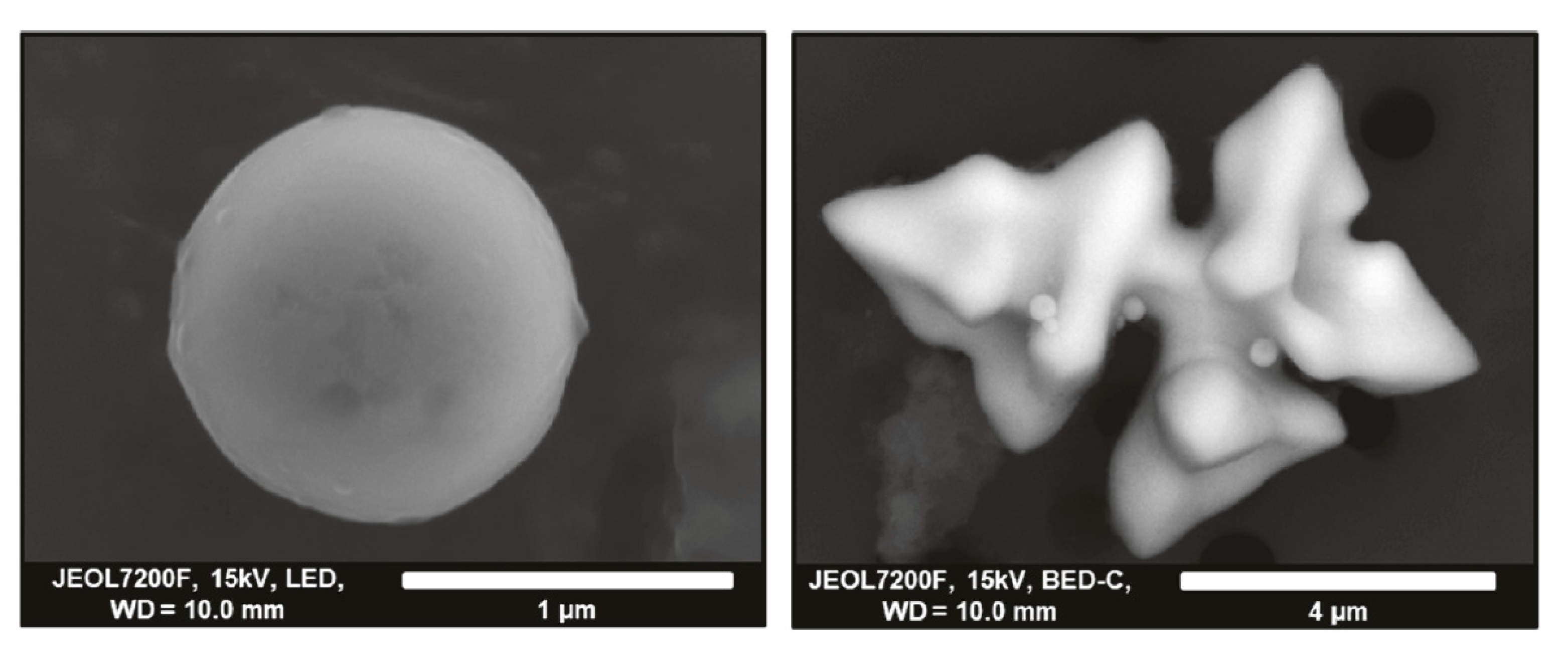
| Inclusions | ||||||||
|---|---|---|---|---|---|---|---|---|
| Main Content | Steel Types | Method | Reagent | Oxides | Nitrides | Sulphides | References | |
| 0–0.01 wt.% C | Pure iron | Chemical | 5% nital sequential | ● | ● | ● | Lab | |
| Electrolytic iron | Chemical | 5% nital sequential | ● | ● | ● | Lab | ||
| Plain carbon steel | Electrolytic | 10% AA 4% MS | ● | [79] | ||||
| Ti-stabilised IF-Steel | Chemical | 5% nital sequential | ● | ● | ● | Lab | ||
| Ultra-low carbon IF steel | Electrolytic | 4–10% TEA | ● | ● | ● | [103] | ||
| 0.02–0.1 wt.% C | Low carbon aluminium killed steel, low carbon aluminium and silicon killed steel | Chemical | Hot HCl | ● | [60] | |||
| Low carbon aluminium killed steel | Electrolytic | 4–10% TEA | ● | ● | ● | [104] | ||
| Si killed steel | Electrolytic | 4–10% TEA | ● | ● | ● | [104] | ||
| Line-pipe steels | Electrolytic | 5% TEA | ● | ● | [96] | |||
| Low eutectoid steels | Chemical | 5% nital sequential | ● | ● | ● | Lab | ||
| Low carbon Oil-pipeline steels | Electrolytic | 10%AA | ● | ● | ● | [108] | ||
| Grade 100 micro alloyed steel | Chemical | Electrolytic | C: Hot HCl E: 10% AA | ● | ● | [62] | ||
| 0.1–0.2 wt.% C | Medium Mn AHSS | Electrolytic | 10% AA | ● | ● | ● | [102] | |
| Rimmed steel | Chemical | Hot nitric acid | ● | [40,41] | ||||
| Medium carbon aluminium killed steel | Chemical | Hot HCl | ● | [60] | ||||
| Alloyed steel | Chemical | 5% nital sequential | ● | ● | ● | [67] | ||
| 13HMF | Electrolytic | 10% AA | ● | ● | ● | [107] | ||
| 1015 | Chemical | HCl | ● | [61] | ||||
| Mid-C-steel | Chemical | 5% nital sequential | ● | ● | ● | lab | ||
| Low eutectoid steel | Chemical | 5% nital sequential | ● | ● | ● | lab | ||
| 0.2–1 wt.% C | Alloyed steel | Chemical | 5% nital sequential | ● | ● | ● | [11,67] | |
| 1030 | Electrolytic | 10% AA 2% TEA | ● | [93] | ||||
| SiMn killed spring steels | Electrolytic | 5% TEA | ● | ● | ● | [95] | ||
| SiMn killed heavy rail steels | Electrolytic | 5% TEA | ● | ● | ● | [18] | ||
| >1% C | Ductile cast iron | Electrolytic | 4–10% TEA | ● | ● | ● | [104] | |
| Electrical steels | Electrolytic | 20% NaCl, 6% trisodium acetate, 2% citric acid; sodium citrate 5%, KBr 1.2%, 0.5% ascorbic acid, water | ● | ● | [81] | |||
| Oriented silicon steel | Electrolytic | 5% TEA | ● | ● | ● | [106] | ||
| Non-oriented electrical steel | Electrolytic | 5% TEA | ● | ● | ● | [105] | ||
| Lab alloys | Fe-Mn-O | Electrolytic | Ionic liquid (choline chloride / urea = approx. 1:1) | ● | ● | ● | [68] | |
| Fe-10 wt% Ni | Electrolytic | 10% AA 2% TEA | ● | [82] | ||||
| Fe-10 wt% Ni | Electrolytic | 2% TEA 2% TEA-Ba | ● | [65] | ||||
| Fe-20 wt% Cr | Electrolytic | 10% AA 2% TEA | ● | [66] | ||||
| Fe- 10 to 20% Mn–1–3% Al TRIP alloy | Electrolytic | 10% AA | ● | ● | [85] | |||
| 1–5 wt.% Cr Steels | SCM440 medium carbon chromium molybdenum alloy | Electrolytic | 10% AA 4% MS | ● | [79] | |||
| 17CrMo4 | Electrolytic | 10% AA | ● | [84] | ||||
| H13 tool steel | Electrolytic | 10% AA | ● | ● | [83] | |||
| High chromium bearing steels | Electrolytic | 2% TEA | ● | [92] | ||||
| 42CrMo4 | Electrolytic | 10% AA | ● | ● | [107] | |||
| >5 wt.% Cr, > 10 wt.% Ni Steels | SUS404 | Electrolytic | 10% AA 4% MS | ● | [79] | |||
| 316L | Electrolytic | 10% AA | ● | [86] | ||||
| 316L | Electrolytic | 10% AA 2% TEA | ● | [101] | ||||
| 316L | Electrolytic | 10% AA | ● | ● | [107] | |||
| Industrial stainless steel | Electrolytic | Non-aqueous HCl-based electrolyte with tartaric acid | ● | ● | [91] | |||
| 18/8 stainless steel | Electrolytic | 10% AA | ● | [19] | ||||
| Ni-based highly alloyed 825 | Electrolytic | 10% AA | ● | ● | [98,99] | |||
| 3R65 | Electrolytic | 10% AA | ● | ● | [107] | |||
| Ferroalloys | FeTi | Electrolytic | 10% AA | ● | [89] | |||
| FeNb | Electrolytic | 10% AA | ● | ● | ||||
| FeSi | Electrolytic | 10% AA | ● | |||||
| SiMn | Electrolytic | 10% AA | ● | |||||
| FeCr | Electrolytic | 10% AA | ● | ● | [90] | |||
Publisher’s Note: MDPI stays neutral with regard to jurisdictional claims in published maps and institutional affiliations. |
© 2022 by the authors. Licensee MDPI, Basel, Switzerland. This article is an open access article distributed under the terms and conditions of the Creative Commons Attribution (CC BY) license (https://creativecommons.org/licenses/by/4.0/).
Share and Cite
Ramesh Babu, S.; Michelic, S.K. Analysis of Non-Metallic Inclusions by Means of Chemical and Electrolytic Extraction—A Review. Materials 2022, 15, 3367. https://doi.org/10.3390/ma15093367
Ramesh Babu S, Michelic SK. Analysis of Non-Metallic Inclusions by Means of Chemical and Electrolytic Extraction—A Review. Materials. 2022; 15(9):3367. https://doi.org/10.3390/ma15093367
Chicago/Turabian StyleRamesh Babu, Shashank, and Susanne Katharina Michelic. 2022. "Analysis of Non-Metallic Inclusions by Means of Chemical and Electrolytic Extraction—A Review" Materials 15, no. 9: 3367. https://doi.org/10.3390/ma15093367
APA StyleRamesh Babu, S., & Michelic, S. K. (2022). Analysis of Non-Metallic Inclusions by Means of Chemical and Electrolytic Extraction—A Review. Materials, 15(9), 3367. https://doi.org/10.3390/ma15093367







